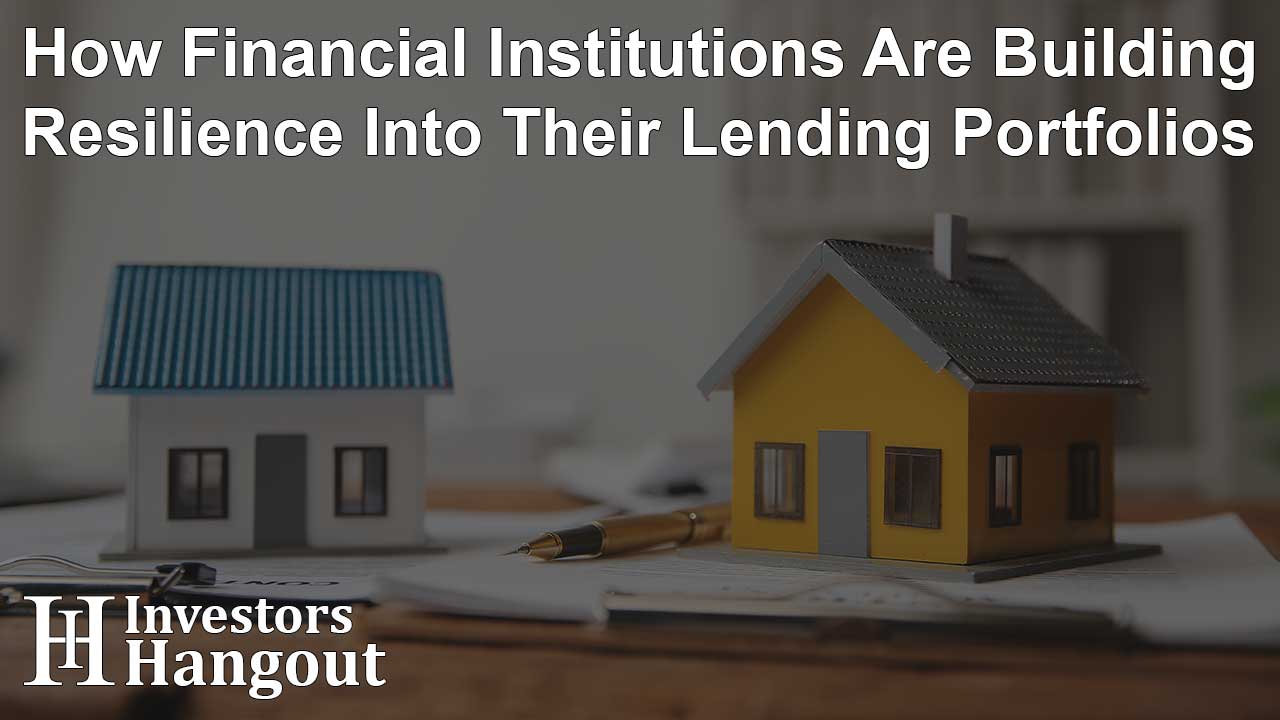How Financial Institutions Are Building Resilience Into Their Lending Portfolios

Today's financial landscape is marred by unpredictability as uncertainty has become a constant in many investment sectors. This is reshaping how banks operate and strategize. With frequent rate fluctuations, changing regulations, economic fragmentation, and geopolitical instability, the lending industry demands more than traditional oversight.
While there have been notable positive signs, such as easing inflation, banks have still had to recalibrate strategies to build agility and enhance forecasting precision. Here are some of the strategies that financial institutions are using to build resilience into their lending portfolios.
Strengthening Credit Underwriting Standards
With tough economic times, financial institutions have been forced to rethink their credit underwriting standards to minimize the risk of default. This has led to tighter borrower criteria, with banks focusing on borrowers who have a healthy debt-to-income ratio and a history of timely repayments. In turn, credit risk management has allowed banks to reduce potential losses and non-performing assets.
To assess asset risk, banks are also utilizing more granular data to get an in-depth analysis of potential clients. Granular data is crucial in understanding customer behavior, identifying patterns, and assessing systemic risk, giving financial institutions a comprehensive look at asset risk and minimizing chances of misinterpretation. Banks especially apply this approach in high-volatility segments, which have traditionally been associated with high risks.
Diversifying Borrower and Asset Exposure
Traditional assets won't just cut it in the current economic environment. Financial institutions have to adjust by spreading risk across different credit tiers, loan types, and geographies to reduce concentration on a particular asset or market sector and minimize exposure. Banks have ventured into new asset classes and non-lending activities such as investment banking, trust services, and insurance to provide extra income amidst economic downturns. Geographic diversification, on the other hand, focuses on lending across a wide range of states and counties. This enables financial institutions to maintain high lending rates even in economic downturns while also reducing the risk associated with focusing on one location. For example, recent calamities such as the Los Angeles fires have left institutions concentrated in that area more vulnerable to losses.
Embedding Dynamic Risk Monitoring
An uncertain environment has necessitated real-time portfolio analytics using advanced tools and data sets to track risk exposure and identify early warning signs. Strategies such as borrower behavior tracking are being used to ensure institutions can make proactive adjustments before certain risks compound. With rapid technological advancements, financial institutions are also leveraging emerging technologies such as generative AI to improve analytical capabilities and provide more in-depth insights during periods of market uncertainty.
Maintaining Conservative Balance Sheet and Liquidity Positions
The best way for financial institutions to sustain financial shocks is by maintaining good liquidity positions and having a conservative balance sheet. This can be in terms of having high reserve buffers that ensure banks can meet their immediate needs, creating liquidity management strategies, and having robust oversight structures. Creating these strategies is instrumental in having well-measured limits across various time horizons and quick decision-making when there is a need for cash flow.
Resilient organizations are creating strategies to measure, monitor, and control liquidity. Such strategies include liquidity modeling and increasing the frequency of cash flows and implementing regular stress-testing models that support capital adequacy even under adverse market conditions. Additionally, it has become important to integrate credit risk management with different liquidity considerations. Recognizing risks associated with near-time liquidation of positions allows financial institutions to develop clear processes for approving and amending credits in the event of counterparty default. Conservative balance sheets and strong liquidity positions help institutions preserve capital adequacy during downturns.
Prioritizing Long-term Portfolio Sustainability
The future is green, and as such, even financial institutions have to ensure that their lending strategies align with sustainability goals and ESG practices. Organizations that invest in climate-resilient infrastructure, green bonds, and loans are in a better position to adapt and ensure their lending practices are cushioned against environmental risks. Many banking institutions are also switching towards prime borrowers, creating responsible growth strategies and mission-aligned lending, which helps them remain resilient in the long term. Indirect strategies, such as collaborating with real estate firms and engaging in sustainable projects, also help to protect property value and reduce the risk of loan defaults.
Strategic Adjustments and Collaborations
To be resilient, financial institutions also need to stay abreast of regulatory changes and work to adapt their lending practices accordingly. This allows for better portfolio management and improves the lender's ability to anticipate and forecast market changes. Collaborating with various industry stakeholders and exchanging best practices is crucial for addressing emerging challenges and making banks more resilient to natural and climate-related risks. Additionally, it is important for banks to make strategic adjustments, such as utilizing different lending solutions like revolving credit lines and short-term loans to manage cash flows and strengthen the overall lending ecosystem.
The Next Chapter in Resilience
In today's dynamic business environment, which is faced with frequent disruptions, inaction is the biggest risk. Financial institutions need to be adaptable and resilient to remain successful in the long term.
By strengthening credit underwriting standards, diversifying borrower and asset exposure, instituting dynamic risk monitoring, and maintaining conservative balance sheet and liquidity positions, these institutions can remain profitable even with increased economic uncertainty. Additionally, it is important for organizations to ensure they create sustainable portfolios and make strategic adjustments and collaborations to safeguard against environmental risk and improve their lending ecosystem. Doing this will not only improve profitability prospects but also increase the market value of such organizations.
About The Author
Contact Logan Wright privately here. Or send an email with ATTN: Logan Wright as the subject to contact@investorshangout.com.
About Investors Hangout
Investors Hangout is a leading online stock forum for financial discussion and learning, offering a wide range of free tools and resources. It draws in traders of all levels, who exchange market knowledge, investigate trading tactics, and keep an eye on industry developments in real time. Featuring financial articles, stock message boards, quotes, charts, company profiles, and live news updates. Through cooperative learning and a wealth of informational resources, it helps users from novices creating their first portfolios to experts honing their techniques. Join Investors Hangout today: https://investorshangout.com/
